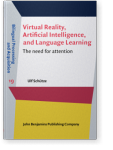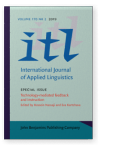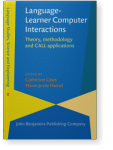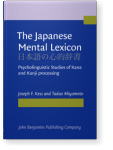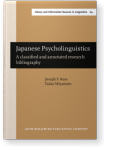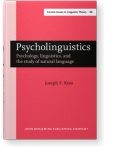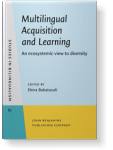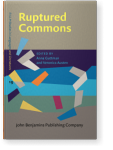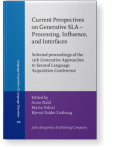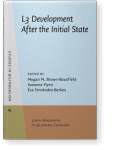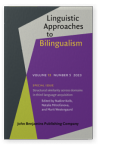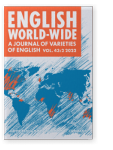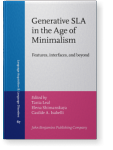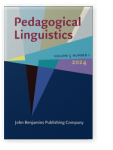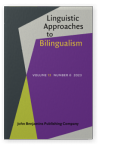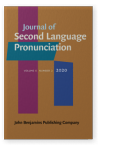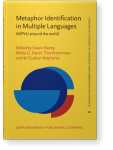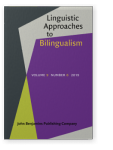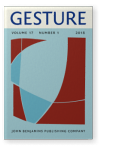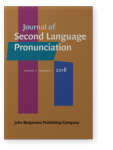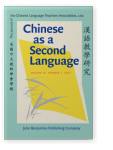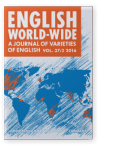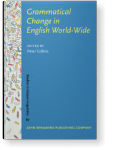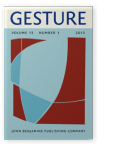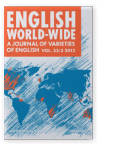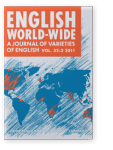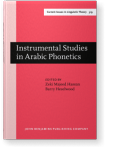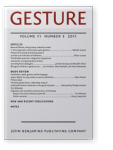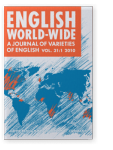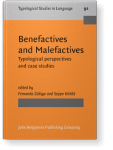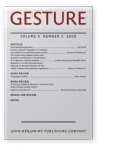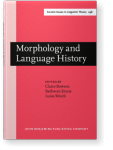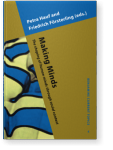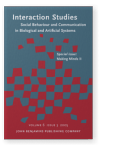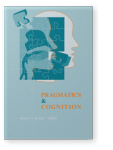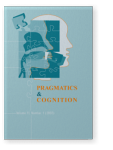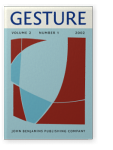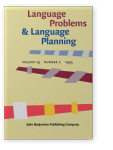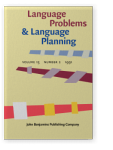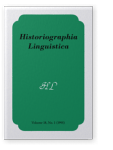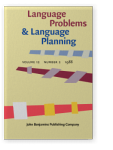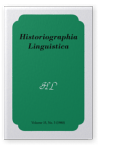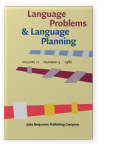University of Victoria
List of John Benjamins publications for which someone affiliated with University of Victoria plays a role.
Subjects Cognition and language | Language acquisition | Multilingualism | Psycholinguistics | Theoretical linguistics
Technology-mediated feedback and instruction: Special issue of International Journal of Applied Linguistics 170:2 (2019)
Edited by Hossein Nassaji & Eva Kartchava
[ITL - International Journal of Applied Linguistics, 170:2] 2019. | special issueSubjects Applied linguistics | Language acquisition | Language policy | Language teaching | Multilingualism
Language-Learner Computer Interactions: Theory, methodology and CALL applications
Edited by Catherine Caws & Marie-Josée Hamel
[Language Studies, Science and Engineering, 2] 2016. xv, 257 pp. | edited volumeSubjects Applied linguistics | Language acquisition | Language teaching
The Japanese Mental Lexicon: Psycholinguistic Studies of Kana and Kanji processing
Joseph F. Kess & Tadao Miyamoto
2000. x, 268 pp. | monographSubjects Japanese linguistics | Psycholinguistics | Writing and literacy
The Light Verb Construction in Japanese: The role of the verbal noun
Tadao Miyamoto
[Linguistik Aktuell/Linguistics Today, 29] 2000. xiv, 232 pp. | monographSubjects Generative linguistics | Japanese linguistics | Semantics
Japanese Psycholinguistics: A classified and annotated research bibliography
Joseph F. Kess & Tadao Miyamoto
[Library and Information Sources in Linguistics, 24] 1994. xii, 355 pp. | monographSubjects Bibliographies in linguistics | Cognition and language | Psycholinguistics
Psycholinguistics: Psychology, linguistics, and the study of natural language
Joseph F. Kess
[Current Issues in Linguistic Theory, 86] 1992. xiv, 383 pp. | course bookSubjects Language acquisition | Psycholinguistics
2024 Phonological features and phonetic variation in multilingual grammars: Restructuring an L3 contrastive hierarchy
In: Multilingual Acquisition and Learning: An ecosystemic view to diversity[Studies in Bilingualism, 67] pp. 348–379
Keywords L3 acquisition | contrastive hierarchy | restructuring | phonology | variation | markedness
2024 “And yet it moves”: Finding a place for phonology in the GenSLA cosmos
In: Current Perspectives on Generative SLA – Processing, Influence, and Interfaces: Selected proceedings of the 16th Generative Approaches to Second Language Acquisition Conference[Language Acquisition and Language Disorders, 70] pp. 264–289
Keywords multilingual phonology | phonological represesentations | phonological features | poverty of the stimulus
2023 Comparing two notions of transfer in third language
phonological acquisition: A reanalysis of three studies
Keywords cross-linguistic influence | full transfer/full access | full transfer potential | L3 phonology | third language acquisition | transfer | transfer models
2023 Using a contrastive hierarchy to formalize structural similarity as I-proximity in L3 phonology
Keywords L3 phonology | I-proximity | Linguistic Proximity Model (LPM) | contrastive hierarchy | cross-linguistic similarity
2023 Microanalysis of Clinical Interaction (MCI)
In: A Pragmatic Agenda for Healthcare: Fostering inclusion and active participation through shared understanding[Pragmatics & Beyond New Series, 338] pp. 43–74
Keywords interaction analysis | clinical communication | video analysis | microanalysis of face-to-face dialogue
2022 Feature dependency and the poverty of the stimulus in the
acquisition of L2 German plural allomorphy
In: Generative SLA in the Age of Minimalism: Features, interfaces, and beyond: Selected proceedings of the 15th Generative Approaches to Second Language
Acquisition Conference[Language Acquisition and Language Disorders, 67] pp. 117–136
Keywords L2 phonology | allomorphy | universal grammar | feature geometry | interfaces
2022 The efficacy of lexical stress diacritics on the English comprehensibility and accentedness of Korean speakers
Keywords accentedness | comprehensibility | lexical stress | Korean speakers | Pronunciation
2022 Phonological parsing via an integrated I-language: The emergence of property-by-property transfer effects in L3 phonology
Keywords L3 phonology | linguistic proximity | contrastive hierarchy | phonological parsing | integrated I-grammar
2020 Pronunciation among adult Indigenous language learners: The case of SENĆOŦEN /t’/
Keywords adult Indigenous language learning | SENĆOŦEN | ejectives | hyperarticulation | social identity | language revitalization
2019 A meta-analysis of the effects of instruction and corrective feedback on L2 pragmatics and the role of moderator
variables: Face-to-face vs. computer-mediated instruction
Keywords computer-mediated instruction | face-to-dace instruction | L2 pragmatics | meta-analysis | effect size | corrective feedback | technology | second language acquisition
2019 The provision and efficacy of peer feedback in blogs versus paper-based writing
Keywords writing | blogs | peer-feedback | types of errors | types of revisions
2019 The role of task repetition and learner self-assessment in technology-mediated task performance
Keywords self-assessment | feedback | task repetition | technology | English for academic purposes
2018 Some pragmatic functions of conversational facial gestures1
Keywords conversational facial gestures | pragmatics of gestures | face-to-face dialogue | smiles | thinking faces | gaze | emotional expressions | collateral signals
2018 Computer-assisted visual articulation feedback in L2 pronunciation instruction: A review
Keywords multimodality | visual feedback | articulation | CAPT | segmental features
2017 The effect of pitch interplay on English-speaking learners of Mandarin
Keywords intonation | tone | unmarked questions | Mandarin | pitch interplay | 无句法标记的疑问句 | 声调 | 语调 | 声调和语调的输出
2016 CALL design and research: Taking a micro and macro view
In: Language-Learner Computer Interactions: Theory, methodology and CALL applications[Language Studies, Science and Engineering, 2] p. 89
Keywords CALL activity | CALL design | micro/macro view | normalization | sustainability
2016 CALL ergonomics revisited
In: Language-Learner Computer Interactions: Theory, methodology and CALL applications[Language Studies, Science and Engineering, 2] pp. 17–40
Keywords CALL research | design | ergonomics | learner-centred research
2016 Cutting-edge theories and techniques for LCI in the context of CALL
In: Language-Learner Computer Interactions: Theory, methodology and CALL applications[Language Studies, Science and Engineering, 2] pp. 1–13
Keywords CALL | design | human-computer interaction (HCI) | learner-computer interaction (LCI) | technology-mediated language learning
2013 Reconciling the effects of mutual visibility on gesturing: A review
Keywords conversational hand gestures | visible communicative acts | experimental design and interpretation | unit of analysis | confederates | visibility effects | gesture measures
2012 The flexible semantic integration of gestures and words: Comparing face-to-face and telephone dialogues
Keywords hand gestures | semantic information | dialogue
2009 The relationship between verbal and gestural contributions in conversation: A comparison of three methods
Keywords redundancy analysis | hand gestures | gesture–speech integration | semantic feature analysis | dialogue
2005 Constructing perspectives in the social making of minds
Keywords Piaget | Vygotsky | Wittgenstein | infant social development | social understanding | theory of mind
2003 From epistemic (ergotic) actions to scientific discourse: The bridging function of gestures
Keywords Author to supply
2003 An experimental study of when and how speakers use gestures to communicate
Keywords gestures | communication | speaker | encoding | recipient design
